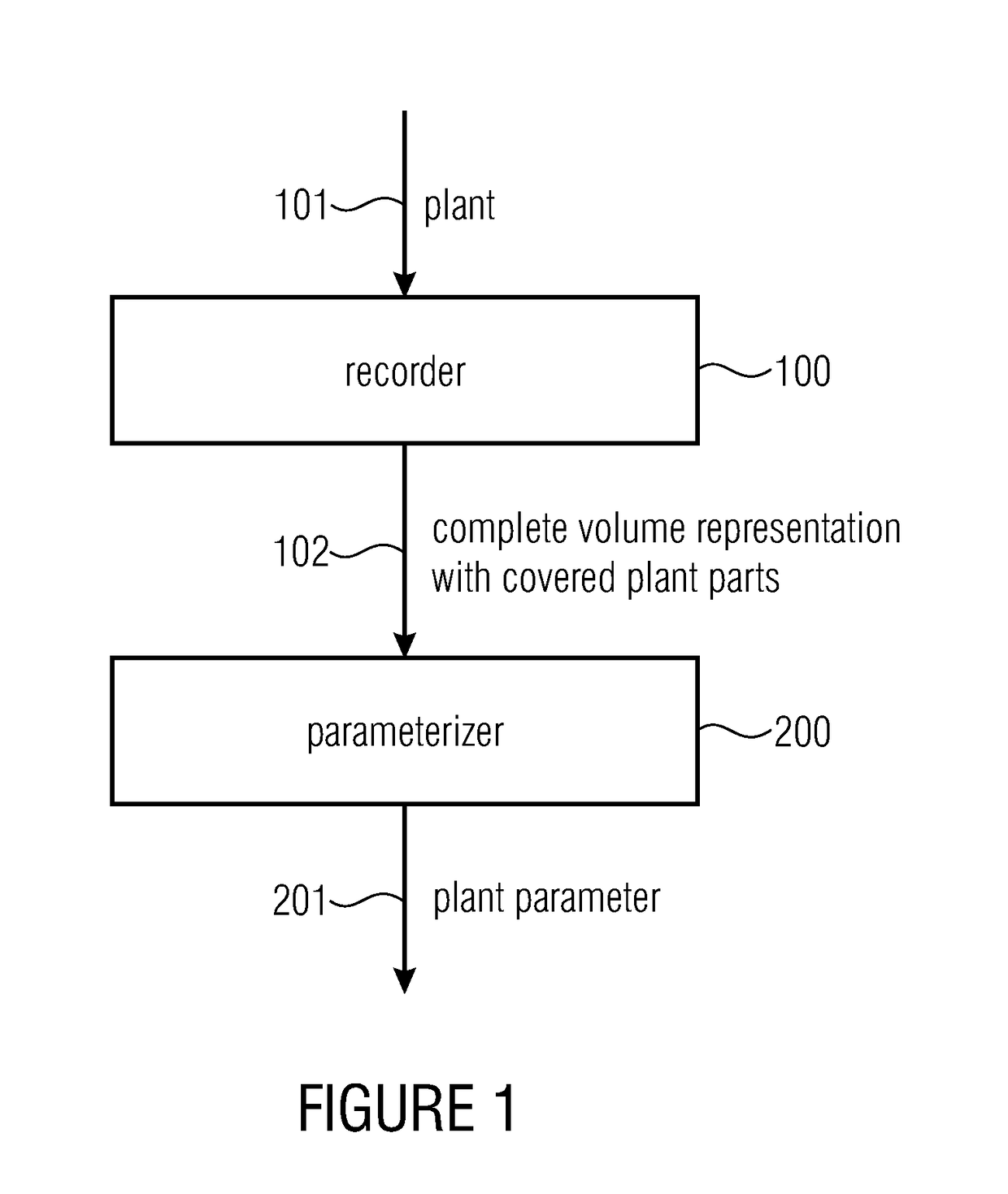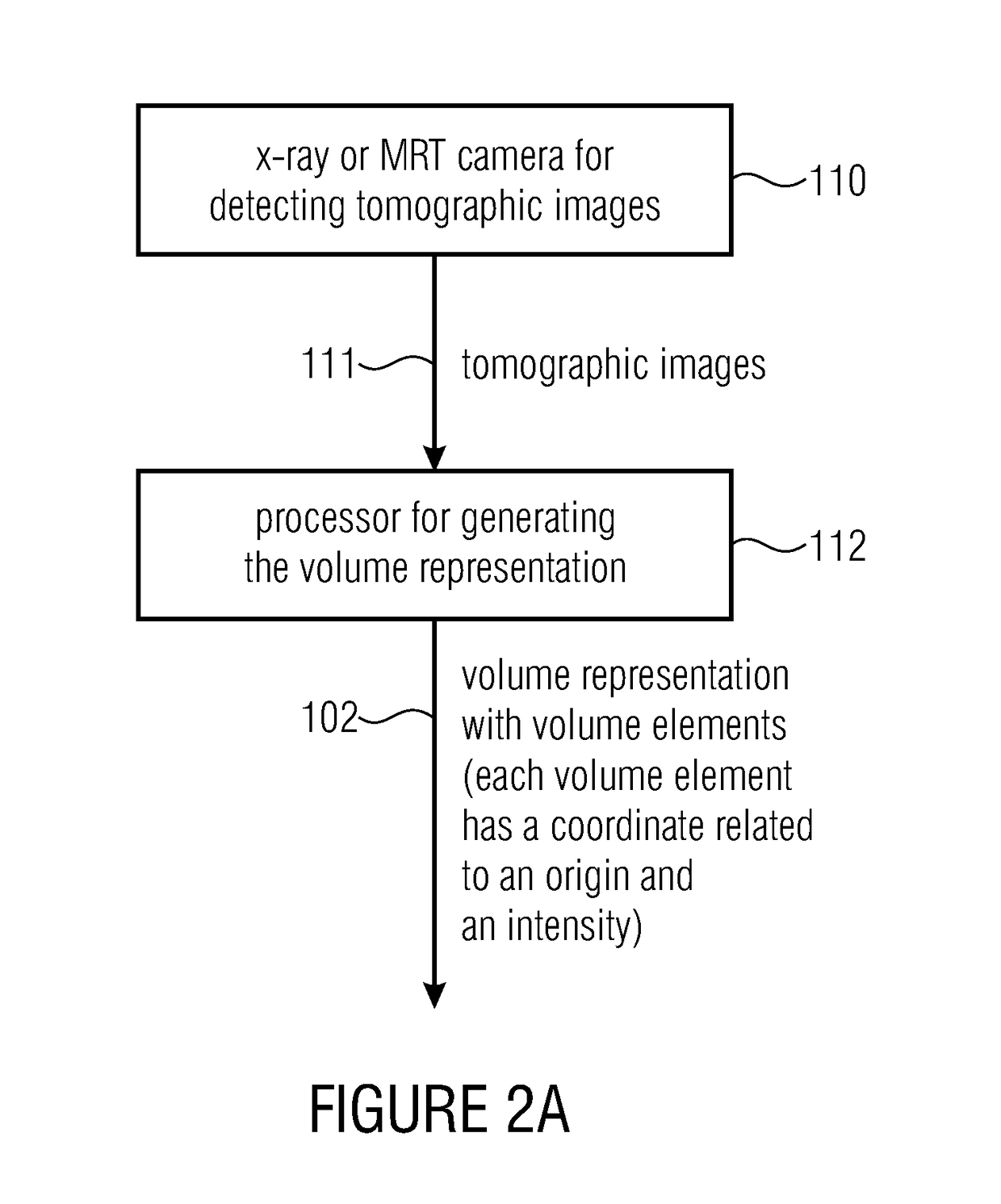Apparatus and method for parameterizing a plant
a plant and plant technology, applied in the field of plant detection, can solve the problems of wrong measurement values, inability to detect the optically accessible part of the plant, and the object area covered by other parts cannot be optically detected, so as to achieve convenient separation, reduce local resolution, and reliable leaf features
- Summary
- Abstract
- Description
- Claims
- Application Information
AI Technical Summary
Benefits of technology
Problems solved by technology
Method used
Image
Examples
Embodiment Construction
[0029]FIG. 1 shows an apparatus for parameterizing a plant. A recorder 100 is implemented to record a three-dimensional data set of a plant 101. The three-dimensional data set does not only have volume elements of the plant that are visible to the outside or optically visible, but also includes volume elements of covered elements of the plant. Thus, the three-dimensional data set not only detects a representation of non-covered elements of the plant but also volume elements of elements of the plant that are covered by other plant elements. This data set is also referred to as complete data set.
[0030]This complete volume representation which can be given, for example, as voxel grid, wherein each voxel comprises both a three-dimensional coordinate with respect to an originating coordinate as well as at least one or several intensity values, is then fed into a parameterizer 200 that is implemented to parameterize the three-dimensional data set, for example the voxel grid, for obtaining...
PUM
 Login to View More
Login to View More Abstract
Description
Claims
Application Information
 Login to View More
Login to View More - R&D
- Intellectual Property
- Life Sciences
- Materials
- Tech Scout
- Unparalleled Data Quality
- Higher Quality Content
- 60% Fewer Hallucinations
Browse by: Latest US Patents, China's latest patents, Technical Efficacy Thesaurus, Application Domain, Technology Topic, Popular Technical Reports.
© 2025 PatSnap. All rights reserved.Legal|Privacy policy|Modern Slavery Act Transparency Statement|Sitemap|About US| Contact US: help@patsnap.com



